Top tactics for when big pike go on a feeding frenzy
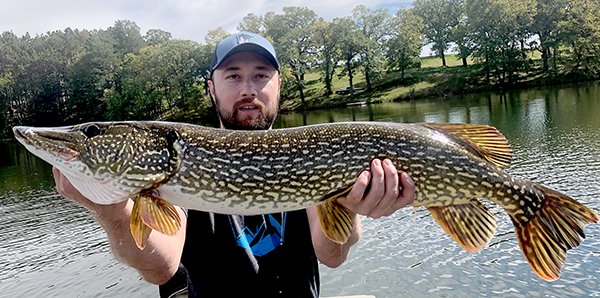
by Tim Lesmeister
It is a toss-up for me whether I like smallmouth bass or trophy pike better when it comes to fishing fresh water. They both provide just enough challenge when trying to coerce them into biting, and when they do commit, they both put up a big fight. I will admit though, it’s a dream-come-true when the big pike rampage and the action is steady.
You have to be on the right water to get into a pike rampage. We’re talking a lake, river, or reservoir that has huge northern pike and lots of them. These conditions exist on many Canadian lakes, some of the big lakes in Minnesota, Lake Superior, the Mississippi River, and some of the Dakota lakes and reservoirs. There are few lakes in the southern United States that carry monster pike so the north country is where the best waters exist.
You never know for sure when the pike rampage will happen. Generally the huge pike are shallow in the spring and fall, and they are roaming that shallow water feeding. Then again, I have been in big-pike water in the middle of summer and ran into schools of hungry pike that would hit anything you throw at them.
It’s timing, really. If you spend enough time on big-pike water you will be there when the big pike go on a feeding binge. These binges don’t last for days or weeks; they last for hours. You can be in the middle of a pike rampage and the next day not get a bite in the spots where the fish were ballistic the day before.
Fast-moving lures are the way to go when in the middle of a pike rampage. Spinnerbaits, inline bucktail spinners, heavy jigs with twister tails all work well. I shy away from crankbaits because there are just too many hooks but will modify them when they are the go-to lure.
I should share a couple of my epic pike rampages.
I was on a lake in Canada, Makoop, with Tom Brown. The lake had not received any serious fishing pressure, and I was using a brown Blue Fox No. 5 inline spinner with two of the three hooks removed from the original treble hook. Pike from 28 to 45 inches were chasing this lure on every cast, three or four at a time and crushing it. I finally cut off the single hook and was still landing pike that would get their teeth tangled in the bucktail and not let go of the lure.
Another epic pike rampage was on Lake Superior in the fall of 2016. Josh Huff and I were on the Pamida Hump in Chequamegon Bay. We took some huge suckers out and we were going to suspend the bait under bobbers, but the pike were too aggressive to waste time on live bait. We removed the treble hooks from some No. 11 Rapalas and put one single hook on the middle eye. We casted to the sand on top the hump and retrieved it to the outer rim of cabbage. When the lure would hit that weed edge big pike would explode out of the vegetation and crush the lure. All of this in shallow, clear water.
You often hear of pike rampages in sentences that end in, “… and it was phenomenal.” For those who have been on the water at the right time, that is a good description.
Understanding the muskie effect
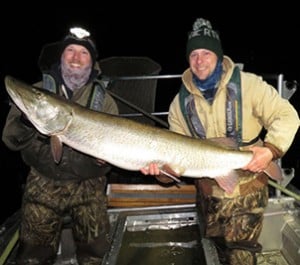
by Outdoors News Staff
Bemidji, Minn. — For graduate student Kamden Glade, Bemidji State University is a place that brings back fond memories of being outdoors and spending time on the lake. In addition to the nostalgia brought on by the shores of Lake Bemidji, Glade has found inspiration from another familiar figure in his life: fish.
“I went fishing a lot in my younger years,” Glade, originally from Sioux Center, Iowa, said. “I’d go on these fishing trips with my family around Minnesota and I’d always tried to catch something new.”
Like many kids growing up in Minnesota, Glade developed an appreciation for the sport. It was not only a source of exploration, but also a way to spend time with friends and family.
Now an experienced fisherman, Glade has combined his love for the sport with his interest in research by working alongside the Minnesota Department of National Resources to better understand the impact muskellunge have on their freshwater companions and ecosystems. With the notorious muskie – a large, freshwater predator – taking center stage, Glade is taking on a challenging and exciting study.
“As an apex predator with sharp teeth and quick thinking, they can be intimidating to study,” he said.
Glade began studying the diet of fish as an undergraduate student when he was completing a research internship in Michigan. During this internship he examined the diet of various fish within Michigan’s lake and creek systems, and though the research differed from what he is doing now, it lends insight and experience to his work throughout the northern Minnesota region.
Many of the lakes in Minnesota are stocked with fish, Glade says. By studying the diet of muskellunge, Glade is hoping to learn more about the lives and populations of the fish that coexist with the predators. Specifically, how muskies might impact the food supply and overall presence of other fish within the lakes they inhabit.
Glade collects his data at night, using electromagnetic generators. Unlike the traditional lure and hook method of fishing, electromagnetic fishing is conducted using a hands-off approach. Generators create currents in the water that encourage muskies to swim towards a boat, rather than wriggle away. This simplifies the catch and release process.
After luring a muskellunge to the boat, Glade and his team use a tube to extract and collect the contents of the muskie’s stomach to further study its consumption and patterns. The fish is then set free.
On track to graduate December 2021, Glade hopes to continue his work in the future.
“I think I can apply what I’ve learned as an undergrad and a grad student to many different fields,” he said. “But I’ve learned a lot from this study, and I hope to continue it into the future.”
— Bemidji State University
DNR certifies new catch-and-release record for northern pike, tie for muskie
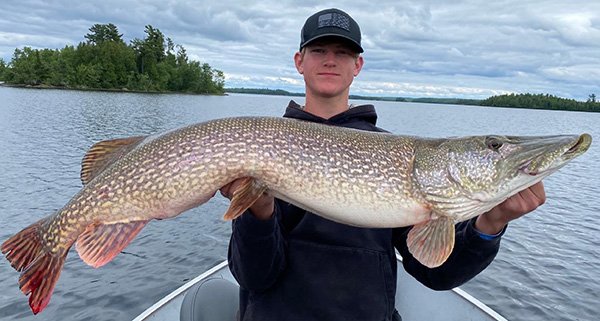
by Minnesota DNR Reports
Anglers over the summer caught and released a new Minnesota state record northern pike and tied the record for muskellunge.
The Minnesota DNR certified the state catch-and-release record northern pike, a 46-1/4-inch fish caught June 19 on Basswood Lake by Brecken Kobylecky, a 15-year-old from Geneva, Ill. The previous record was a 45-1/4-inch northern pike caught on the Rainy River in 2018.
The record pike was the biggest fish Kobylecky had ever caught. He was fishing with an Ely-based fishing guide and with about 10 minutes left of their final day fishing, they were trolling for pike.
“We hooked onto a huge pike that was barely hooked, and could hardly land it due to the sheer size and weight of the fish,” Kobylecky said.
Once the fish was in the boat they carefully took a few photos and measured the pike before releasing the fish back to the open water.
“The whole experience went by in a flash but it was an experience of a lifetime I’ll never forget,” Kobylecky said. 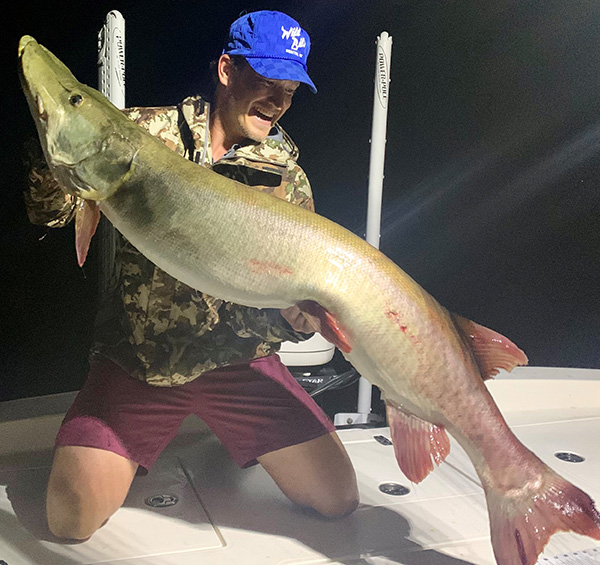
The DNR also certified a 57-1/4-inch muskie caught July 23 on Lake Vermilion by Todd Kirby of Hudson, Wis., that tied a 2019 muskie also caught on Lake Vermilion.
With two Vermilion Lake muskies now tied for the state record, this well-known water body continues to prove itself as a top muskie fishing destination. Kirby had fished the lake a handful of times and was familiar with small pockets that muskie seem to inhabit.
“That Friday night we were up against the weather. There was a huge storm front moving through creating extremely unstable conditions. The humidity was high, and storm clouds were building. It was one of those nights that the fish seemed to be super active, our boat had multiple chases, one resulting in a 48 inch fish in the net — at that time my personal best,” Kirby said.
They continued fishing into the night and around 10:30 p.m. he had a large “thud” hit his line hard when his bait was no more than 15 yards from the boat.
“I compared it to reeling in a large moving ‘log’ and after a few dark splashes, she was in the net. Everything just happened so fast!” Kirby said.
Kirby and fishing partners John and Will Gavic thought the fish looked 50 inches and were amazed seeing they caught a fish even longer, and one that would earn state record status.
“My bait just so happened to be the one that she ate, but that whole night couldn’t have been possible without the help of John Gavic and Will Gavic. Muskie fishing is a team effort, and when you have a good team on your side, landing a fish of that caliber creates a memory of a lifetime,” Kirby said.
Finish the laker season in style with precision trolling
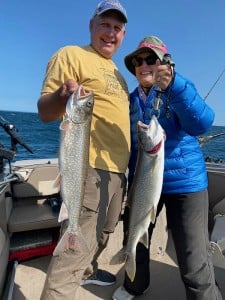
By Tim Lesmeister
I was never much of a troller until I began to spend my summers on Madeline Island on Lake Superior. I still love to cast swim baits to the smallmouth bass in Chequamegon Bay. It doesn’t get more fun than feeling the bite of a huge northern pike that grabbed the jig you were snapping through a big bed of cabbage. But if you want to catch the lake trout, salmon, and brown trout, you better learn to troll.
My son Brent is actually my model when it comes to perfecting the art of precision trolling. He is the master. Brent is laser-focused on keeping the downrigger balls at the perfect depth, which for lake trout is generally a foot off the bottom. For suspended salmon and brown, he keeps the lure just a foot above them.
This often means constant adjustment, which I rarely see other anglers do. I’ve been out on many a boat where the downrigger balls were sent down to a depth that was “close” to the bottom, but no bites were generated because the lures, because they were not close enough. With Brent manning the downriggers we always have the lures in the zone.
A recent example happened just a few days before the season was closed early in the region around the Apostle Islands. We began by trolling the north side of Madeline Island. We started in 90 feet, worked out into 100 feet, eventually straining depths out to 140 feet without a bite and seeing nothing on the sonar. “Let’s move into 65 feet of water,” Brent said. I cautioned that the bottom is pretty erratic in that region, but Brent insisted we try it.
My son stayed on the downriggers while I called out the depths, and we had a limit of nice lakers in less than an hour.
Lures make a huge difference and if something is not working it comes off in 20 minutes. When we discovered the lakers on “The Flats” were not hitting spoons this past summer, Brent tied on a narrow, white crankbait to mimic the smelt he figured they were foraging on, and on another rod he used a small spoon for a dodger in front of a spin-and-glow he tied onto an 18-inch leader behind the spoon. It took us 90 minutes to find the fish, but once we did we had a limit fast.
His leaders are fluorocarbon. His search areas are tight quadrants that get covered by tightly choreographed trolling passes. The lures get switched out until the right one is discovered and that becomes the dominant presentation. The balls are constantly monitored to stay in The Zone. All of this results in a cooler full of fish.
Brent’s mother, Rae, my wife of almost 50 years, also has been bit by the trolling bug. Whenever Brent and I plan a trip we always take our good-luck charm along. It seems like every time Rae starts looking up new recipes to prepare lake trout a fish pops the lure off the ball. Brent has now been relegated to the job of net man as Rae is the designated reeler. Trolling with downriggers after all, is much more successful as a team sport.
For the rest of the summer now I’ll be heading into the Chequamegon Bay to do some casting for bass and pike. The Wisconsin DNR closed the lake trout season early this year on August 15th in the Apostle Islands region (WI-2) of Lake Superior . You can still hunt them in most of Lake Superior’s waters until the end of September so add some precision to your trolling and finish out the 2021 season in style.
FALL WEATHER PATTERNS – KEY TO SUCCESSFUL END OF SUMMER FISHING
Posted in Joel Nelson
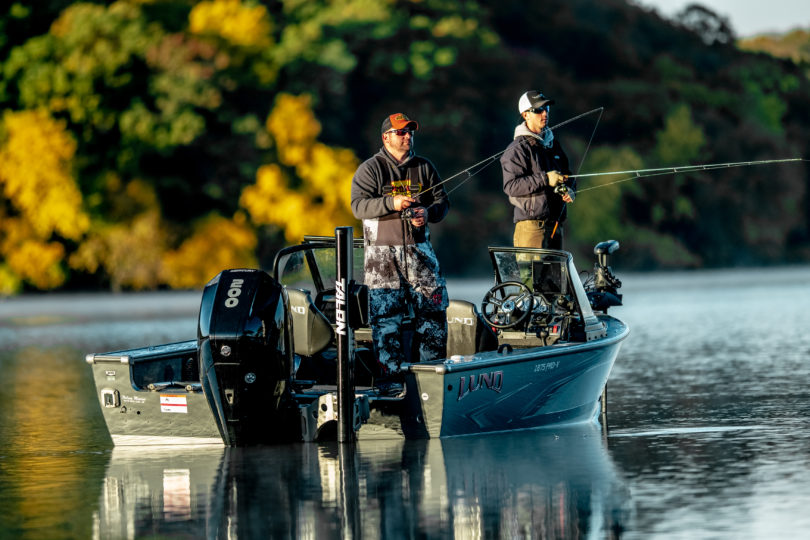
We’re in an August lull of sorts right now, and that kind of fishing can certainly extend into September depending on weather. Still, I’m given a bit of hope by the cooler nights and drier days. That fall-like air is always an indicator of better angling, or at least better fishing yet to come. On the other side of the spectrum, the dreaded late-summer heat spells that so many favor can simply kill bites that are otherwise keyed up and ready to go.
Right now, water temperatures are at their peak and fish are pretty satisfied. It takes a precision presentation with several factors in your favor to make them eat. Be it wind, early or late feeding windows, or maybe just the proper imitation of whatever they’re preferring at the moment, you have to do a lot “right” to make things happen during this time of year.
Contrast that to the fishing we’ll see in October, maybe hopefully even September. Baitfish will be migrating in preparation for winter, while cooling temps allow fish to be comfortable in more depth zones, especially shallow. Those seasonal changes will trigger more aggressive behavior, and get fish going on a variety of patterns in many places throughout any system. In other words, you won’t have to be doing as many things “right” to get fish to eat then.
Still, fish need to eat and they’re out there to catch during this time period, it’s just easier to do so when the weather more resembles fall than summer. Think of cooler nights that give way to calm mornings, and wind systems out of the northwest that bring such air and stir up the bottom end of the food chain. On a recent trip for gills and crappies, we found aggressive schools of quality sunfish placed exactly where you’d expect a walleye. We used some side imaging to follow a great rock outcropping of only the biggest and greatest concentrations of boulders. That rockpile happened to be at the tip of a main-lake point, and even better, it was getting ample wind from the Northwest. Perfect for Minnesota’s state fish, but also some of the biggest bluegills in the system. 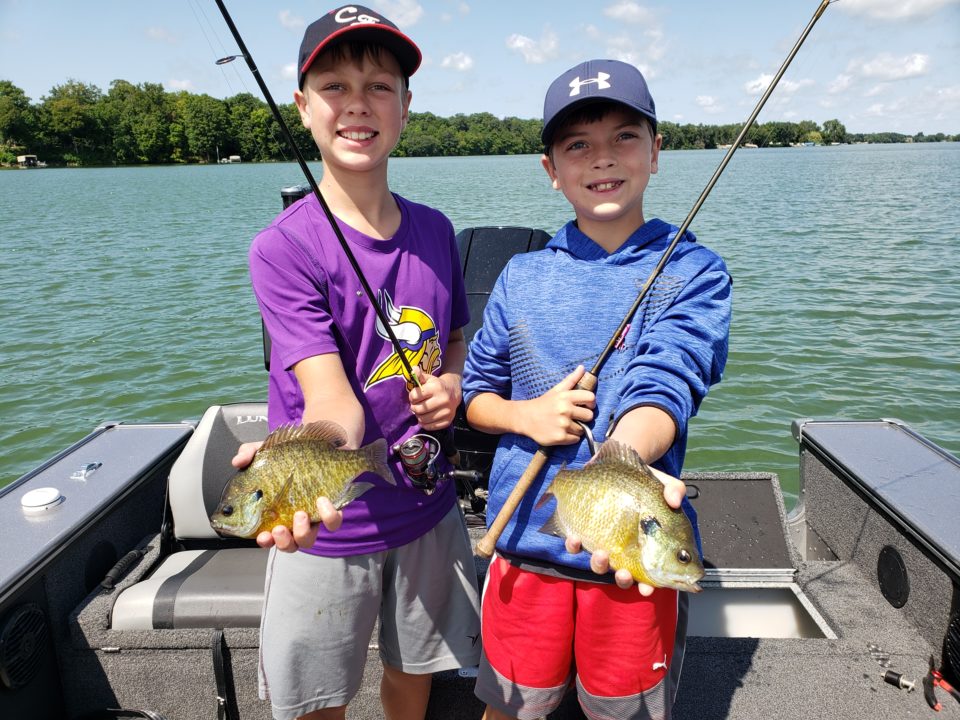
Live bait is a good option during this time period, as some extra scent and realism makes for easier fooling of especially panfish and walleyes. That doesn’t mean that fish won’t eat artificials now however, as the other direct from lifelike and slow, is loud and proud, with the latter being especially effective during those bite windows to elicit reaction strikes. Crankbaits and big plastics with ample vibration are great options during this time period, provided you’re not throwing them during the heat of the day.
Rivers are another prime time opportunity right now, no matter the weather. As lower flows settle out towards fall, fish in small rivers especially start to lose some underwater real estate. That puts them in more predictable locations at the bottom end of runs where the only deep water of the river exists. Smallies, walleyes, and catfish will all pile into these pools, usually still in different portions of it, but they’re pretty willing to eat what comes by. They too are more aggressive in cool stretches as the hottest part of summer goes on.
Weather in general is a tricky deal for anglers. The best days of course are any days you can go out and fish, but if you’ve got your pick, consider stable weather above all else. Big swings in temperature, either direction aren’t exactly favorable to the bite. That said, lasting changes of 3-5 days or even more are the kinds of weather you’re looking for. In this case, that would start with a cold front that ushers in drier and cooler air to stay. The first day or two may be challenging, but the fishing will get better moving into the end of that system, usually just before some southerly winds bring heat back into the equation. Avoid those stretches, especially moving deeper into the fall, as they may be the most comfortable yet least productive.
Big thunderstorms are less common during this time period, and usually when they exist, follow the hot weather that’s been detrimental to fishing, so your pre-frontal conditions are less key. For that reason, I’m not as glued to the barometer this time of year as I am so many other times. I still will avoid spiking high pressure fronts, cool or warm, as again, I’m looking for stability more than anything.
Another key for me during this time of year is perch, crappies, and gills, really whatever is willing to cooperate. I’m of the opinion that too many anglers fish for predator species all year like it was early June. Instead of catching these fish at will, the way the angler wants to catch them, they could focus on all kinds of other species in different places that bend a rod as well. I find each of those species will often play ball when others won’t, extending the summer fun well into fall.
No matter what you chase or where you do it, it’s important to get out when you have time. If that’s 1pm on a hot September Saturday, it still sure beats house chores or work. For those with some flexibility and willingness to watch the weather, you’ll be rewarded with even faster fishing by coordinating your calendar with the weather-man’s.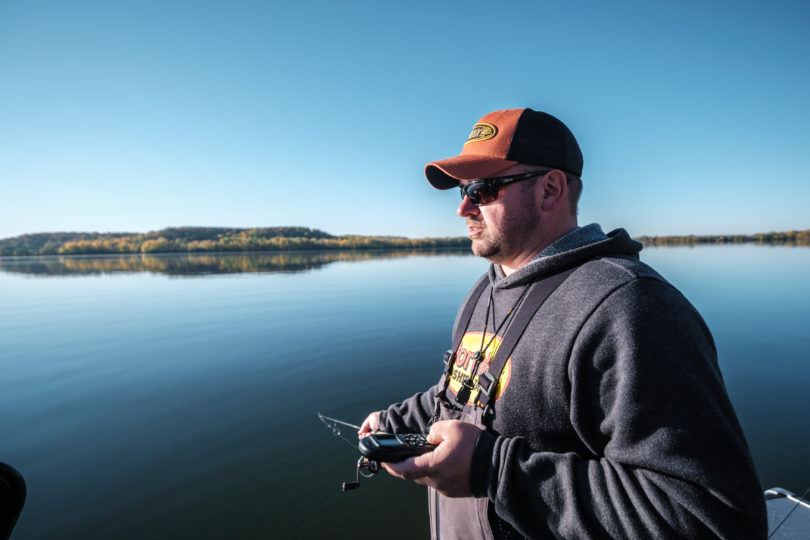
Posted in Dock Talk

